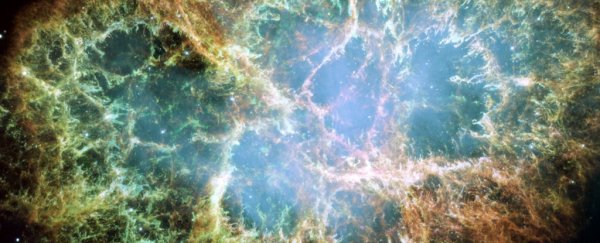Physicists have conducted the most high-energy test of the speed of light yet, and found that it is still constant, everywhere in the Universe, even in gamma rays spewed out of sources such as exploding stars.
This means that, even at the highest energies we can detect, one of the pillars of Albert Einstein's theory of special relativity still stands firm.
"How relativity behaves at very high energies has real consequences for the world around us," said astrophysicist Pat Harding of Los Alamos National Laboratory in New Mexico.
"Most quantum gravity models say the behaviour of relativity will break down at very high energies. Our observation of such high-energy photons at all raises the energy scale where relativity holds by more than a factor of a hundred."
Lorentz invariance is a fundamental principle of special relativity. It expresses that, no matter where you are in the Universe, the laws of physics - including light speed - remain the same.
There are, however, theories that suggest Lorentz invariance could be violated at very high energies.
If this were to happen, we'd need new laws of physics to explain it. But we may also be able to detect it.
If Lorentz invariance breaks at high energies, then high-energy phenomena should display unexpected behaviour inconsistent with relativity; light, for instance, could travel at different speeds.
This is where gamma rays come in. They're the shortest wavelength, highest-energy type of light on the electromagnetic spectrum, produced by the radioactive decay of atomic nuclei.
They emit from supernovae, neutron stars, stellar flares, and the regions around black holes - very extreme space phenomena, in other words.
If gamma rays were to speed up under the violation of Lorentz invariance, gamma-ray photons would decay into lower-energy particles before ever reaching Earth.
Those lower-energy particles may or may not get here, but they wouldn't be gamma rays any more.
Now, we need to discuss the High-Altitude Water Cherenkov Observatory (HAWC). It's the highest-altitude gamma-ray detector there is, designed for detecting the highest-energy gamma rays, from 100 billion to 100 trillion electronvolts (100 gigaelectronvolts, or GeV, to 100 teraelectronvolts, or TeV).
That's approximately 100 billion to 100 trillion times the energy of visible light - if we could see it, it would be blinding.
The HAWC Observatory is a Cherenkov detector. It consists of an array of tanks filled with water, with photomultiplier tubes that can detect light. When a gamma ray hits the upper atmosphere, it loses energy due to interactions with the atmospheric molecules, creating a cascading shower of light-speed particles.
It's these particles that the HAWC Observatory is designed to detect. When they enter the water at high speeds, they travel (briefly) faster than light can actually travel through the water, since the water slows light down just a little.
This produces a 'luminal boom' - the light equivalent of a sonic boom - which produces an ultraviolet glow. That glow is called Cherenkov radiation, and it's what the photomultiplier tubes pick up.
The higher energy the gamma rays, the more particles in the resulting shower. That's how physicists can distinguish between gamma ray energies.
With this method, the HAWC Observatory has recently detected a number of gamma rays with energies higher than 100 TeV. That fact alone places constraints on the violation of Lorentz invariance - it means the photons weren't travelling faster than the speed of light in a vacuum.
In fact, none of them showed any signs of the photon decay associated with breaking Lorentz invariance.
That doesn't mean that Lorentz invariance can't break at even higher energies, but it does mean that it hasn't broken within our detectable limits. And that's really neat.
"Detections of even higher-energy gamma rays from astronomical distances will allow more stringent [checks] on relativity," Harding said.
"As HAWC continues to take more data in the coming years and incorporate Los Alamos-led improvements to the detector and analysis techniques at the highest energies, we will be able to study this physics even further."
The research has been published in Physical Review Letters.
